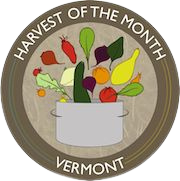Maple Syrup
Maple syrup comes from sugar maple trees, known as senômozi to the Abenaki. Sugar maple is native across New England, parts of the upper Midwest, and Quebec-- a unique bioregion known as Maple Nation. Many thousands of years ago, the Indigenous people of this region devised a way of tapping into that flow of sap, collecting it in buckets, then boiling it down to get senômozibagw [se-NOH-moh-ZEE- bahk], sweet maple syrup and maple sugar. Over the millennia, the tools and methods for sugaring have changed, however the basic practice has remained the same; collecting sap and concentrating its sugar content to something sweet and syrupy. The process requires patience, as it takes 40 gallons of sap to make one gallon of syrup, but the wait is well worth it!
Downloads (PDF):
Reading List:
» Ininatig’s Gift of Sugar: Traditional Native Sugarmaking by Laura Waterman Wittsotck
» At Grandpa’s Sugar Bush by Margaret Carney
» Maple Syrup from the Sugar House by Laurie Lazzaro Knowlton & Kathryn Mitter
» A Day at the Sugar Camp by Jessica Diemer Eaton
» Kwezens makes a lovely discovery, presented by Leanne Betasamosake Simpson
» The Sugar Bush by Winona LaDuke






